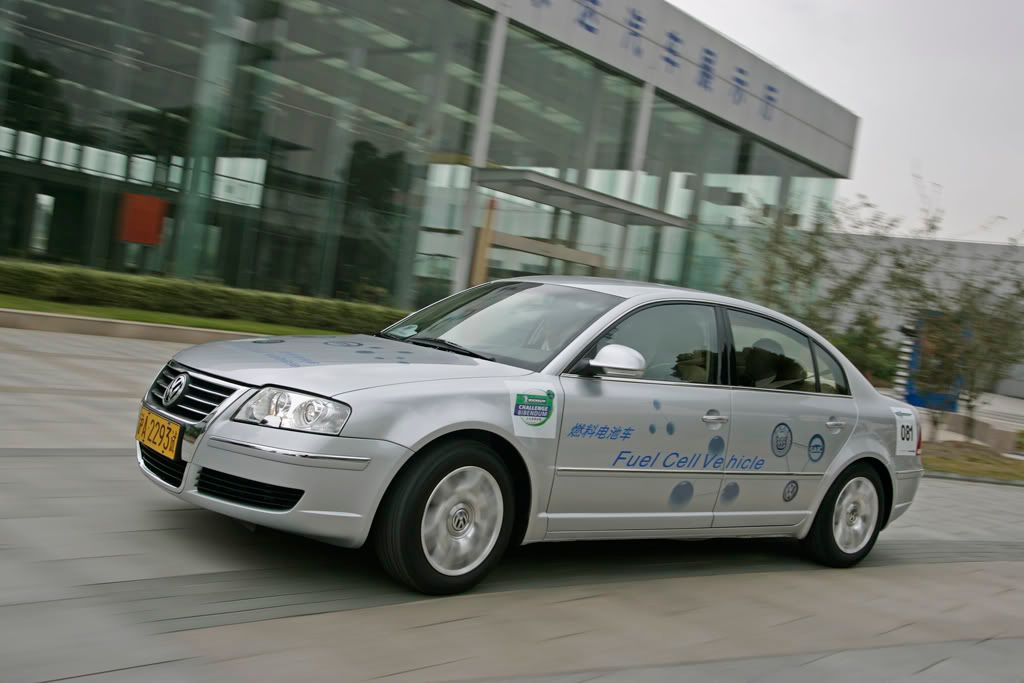Zero Emission Passat Lingyu @ Michelin Challenge Bibendum 2007 in Shanghai
Posted by phaeton at 3:46 pm

Here is a zero emission Passat powered by a Hydrogen Fuel Cell developed by Shanghai Volkswagen (SAIC and VW) and Tongji University.
Its not the first Hydrogen Fuel Cell developed by SAIC, VW and Tongji University together, since 2004 there have been 4 studies ChaoYue 1 to 4 based on Shanghai VW models.
This latest study is the most advance of them all.
more details after jump.
2007 Bibendum Challenge - Passat Lingyu with fuel cell
The car from the campus: Tongji University develops fuel cell
Zero emissions Passat was constructed by renowned Tongji University
Should set a precedent: Students, professors and industry combine forces
Wolfsburg / Shanghai, 14 November 2007
The zero emissions version of the Passat Lingyu is ahead of its time. The prototype, jointly developed by Volkswagen and Tongji University in China, is an example of
Volkswagen’s long-term collaborative work with the world’s most creative thinkers in developing new solutions for a clean future. Tongji University, which by the way was founded by Germans as a “medical school” in 1907, is one of the most respected universities in Asia today.
The fact is: The students and professors developed the Passat Lingyu to be one of the first vehicles whose fuel cell was practically entirely created at a Chinese university. An extraordinary performance. The Passat is powered by an 88 kW strong electric motor. The low-temperature fuel cell from the Tongji University supplies the energy; it is the fourth generation to be developed on the campus so far.
The hydrogen fuel cell is located in the underbody of the Passat Lingyu. The fuel cell system develops a peak power of 55 kW. The energy recovered by converting hydrogen (H2) into water (H2O) is fed into a lithium ion battery. It is located beneath the rear bench seat and has a capacity of eight Ampere-hours (Ah) at 376 Volt (V).
The gaseous hydrogen (total of 3.2 kilograms) is transferred to a carbon fiber reinforced pressure tank at 350 bar. Assuming an average consumption of about 1.36 kilograms H per 100 kilometers, the theoretical range would be 235 kilometers on one tank of fuel.
The torque-strong electric drive (210 Nm) delivers a very special and fascination. Mounted on the driven front axle, the motor provides for reasonable acceleration times (0-100 km/h: 15 s) and a top speed of 140 km/h. During faster accelerations the lithium ion battery plays a supporting role. When the Passat Lingyu is braked, on the other hand, energy flows back into the battery. It is located beneath the rear bench seat and has a capacity of eight Ampere-hours (Ah) at 376 Volt (V).
Source:Volkswagen
Labels: fuel cell, passat lingyu, shanghai volkswagen, tongji uni











<< Home